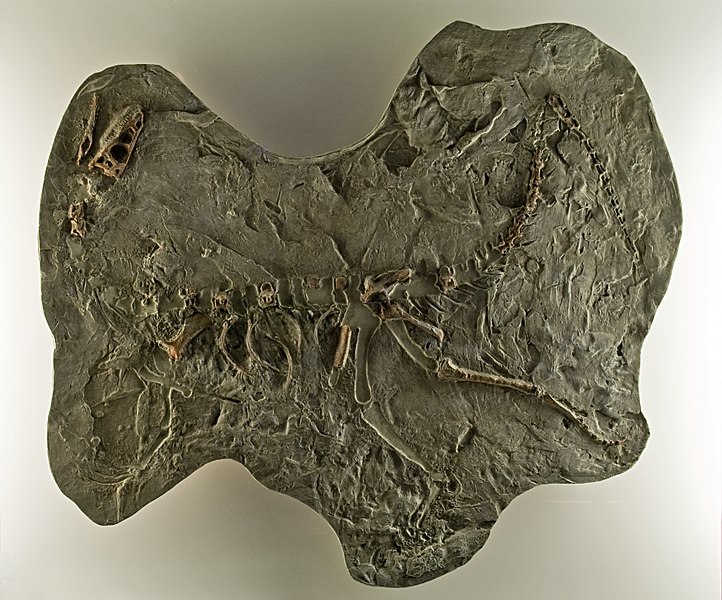In recent years, I've noticed a trend: the prefix "stem-" is becoming more and more popular for stem groups. For those who don't know what a "stem group" is:
- A crown group is the last common ancestor or two or more extant taxa, and all descendants thereof.
- A total group is the first ancestor of a crown group that is not also ancestral to any other extant taxa, and all descendants thereof.
- A stem group is a total group minus its crown group. (Which means, of course, that a total group is a crown group plus its stem group.)
Or, to put it more simply, an extinct organism is a stem-X if it does not belong to X, but it shares more ancestry with X than with any extant organisms outside of X. Real-life examples:
 |
| Velociraptor mongoliensis, a stem-avian. Illustration by myself (Mike Keesey). |
- Stem-mammals: Dimetrodon, Moschops, Cynognathus, Castorocauda.
- Stem-avians: Marasuchus, Psittacosaurus, Plateosaurus, Tyrannosaurus, Velociraptor, Archaeopteryx, Hesperornis.
- Stem-humans: Ardipithecus(?), Australopithecus, Paranthropus, Homo habilis, Homo erectus.
- Stem-cetaceans: Ambulocetus, Pakicetus, Maiacetus, Basilosaurus.
- Stem-felines: Proailurus, Smilodon.
Stem-pterygotesStem-neopterans: Dictyoneura, Lithomantis.
This is a great convention. It's consistently useful in every area of the Tree of Life. It's concise. It communicates instantly the general area we're talking about, and sets us up to make proper phylogenetic inferences (when the fossil data is lacking).
So I'm glad this trend is becoming more popular. Unfortunately, I've also noticed another trend: rampant misuse!
Case in point:
- CABREIRA & al. (2011). New stem-sauropodomorph (Dinosauria, Saurischia) from the Triassic of Brazil. Naturwissenschaften (online early). doi:10.1007/s00114-011-0858-0
This looks to be an excellent paper on a very interesting find, so it's unfortunate that there's a glaring error in the title, but there it is: "stem-sauropodomorph". There is no such thing, because Sauropodomorpha is not a crown group. It doesn't even include a crown group (sadly—it'd be very cool if it did). Rather, all sauropodomorphs are part of the avian stem group.
 |
| Panphagia protos, a stem-avian (not a "stem-sauropodomorph"). Photo by Eva K. Used under the GFDL. |
I see a lot of people making this mistake. I think what's happening is that they're using the basic concept of a stem group, but replacing "total group" with "some large clade" and "crown group" with "an interesting subclade". In this case, Sauropodomorpha is "some large clade" and Sauropoda is "an interesting subclade". (And in that case, the usage is even wronger, because it should at least be "stem-sauropod".)
This misuse is unfortunate because it is subjective, while the proper usage is objective. One could make the argument that the real "interesting subclade" of Sauropodomorpha is Titanosauria, or Neosauropoda, or whatever, and then the terminology would mean something very different. By contrast, e.g., "stem-crocodylian" very clearly indicates a particular paraphyletic group.
So, please, people, use the "stem-" prefix, but use it correctly!



